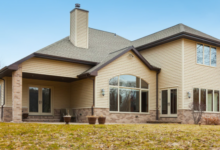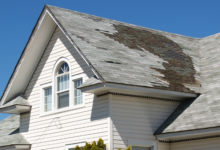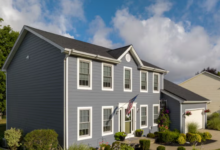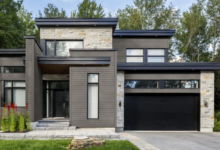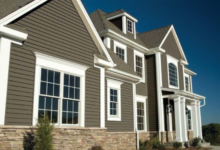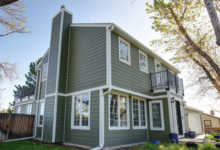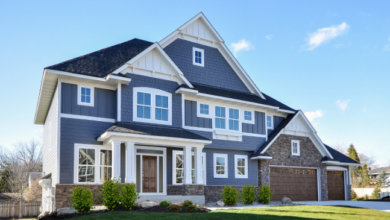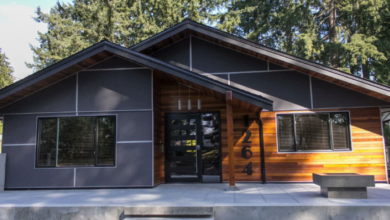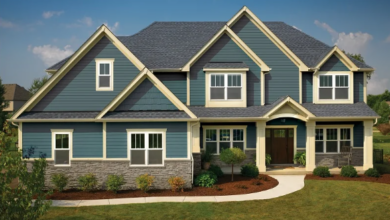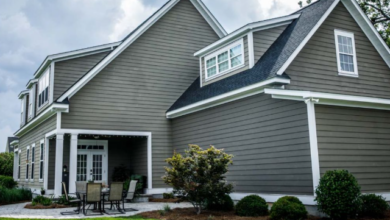Low-Maintenance Siding Options for Your Home
Low-Maintenance Siding Options – Explore top low-maintenance siding materials like vinyl, fiber cement, engineered wood, and metal. Learn about their benefits, real-world products, and find out where to buy them.
Transform Your Home with Low-Maintenance Siding Options
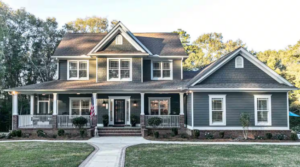
Choosing the right siding for your home is crucial—not only for aesthetics but also for durability and maintenance. High-maintenance exteriors can consume your time and resources, while low-maintenance siding offers a hassle-free solution.
In this comprehensive guide, we’ll delve into the best low-maintenance siding options, their benefits, real-world product examples, and how to purchase them.
Why Opt for Low-Maintenance Siding?
Opting for low-maintenance siding offers numerous advantages for homeowners, primarily centered around saving time, money, and effort. Here’s a breakdown of the key reasons:
1. Time Savings:
- Reduced Upkeep:
- Low-maintenance siding eliminates the need for frequent painting, staining, or sealing. This frees up valuable time that would otherwise be spent on exterior maintenance.
- Easier Cleaning:
- Most low-maintenance siding materials can be easily cleaned with a simple garden hose or mild soap and water. This makes routine cleaning quick and effortless.
2. Cost Savings:
- Minimized Painting and Staining Expenses:
- Traditional siding materials like wood often require regular repainting or staining, which can be costly. Low-maintenance options eliminate these expenses.
- Reduced Labor Costs:
- Since low-maintenance siding requires less upkeep, homeowners can save on labor costs associated with professional painting or maintenance services.
- Long-Term Value:
- By reducing the need for frequent repairs or replacements, low-maintenance siding can save homeowners money in the long run.
3. Enhanced Durability:
- Resistance to Weather and Pests:
- Many low-maintenance siding materials are designed to withstand harsh weather conditions, including rain, wind, and sunlight. They are also resistant to pests like termites, which can cause significant damage to traditional siding.
- Longevity:
- Low-maintenance siding materials tend to have a longer lifespan than traditional options, reducing the need for frequent replacements.
4. Increased Curb Appeal:
- Consistent Appearance:
- Low-maintenance siding materials retain their color and appearance for longer periods, ensuring that your home maintains its curb appeal.
- Variety of Styles:
- Low-maintenance siding is available in a wide range of colors and styles, allowing homeowners to achieve their desired aesthetic without sacrificing convenience
5. Peace of Mind:
- Reduced Stress:
- Knowing that your siding requires minimal upkeep can provide peace of mind and reduce the stress associated with home maintenance.
- More Time for Enjoyment:
- By reducing the time spent on exterior maintenance, homeowners can have more time to enjoy their homes and pursue other interests.
In essence, low-maintenance siding offers a practical and cost-effective solution for homeowners who want to minimize upkeep and maximize the longevity and appearance of their homes.
Top Low-Maintenance Siding Materials
1. Vinyl Siding
Vinyl siding is a popular choice due to its affordability and ease of maintenance. Made from PVC plastic, it’s resistant to moisture, rot, and insects. With a variety of colors and styles, vinyl can mimic the appearance of wood without the associated upkeep.
Benefits:
- Durability: Withstands harsh weather conditions.
- Low Cost: Budget-friendly option for homeowners.
- Versatility: Available in numerous colors and textures.
- Easy Cleaning: Occasional power washing keeps it looking new.
Real-World Example:
- CertainTeed Monogram® Vinyl Siding: Offers a natural woodgrain appearance with a wide array of color options.
2. Fiber Cement Siding
Composed of cement, sand, and cellulose fibers, fiber cement siding is known for its durability and fire resistance. It can mimic the look of wood, stucco, or masonry, providing versatility in design.
Benefits:
- Fire Resistance: Non-combustible material enhances safety.
- Pest Resistance: Unattractive to termites and other pests.
- Longevity: Can last for decades with minimal maintenance.
- Customizable: Can be painted in any color to match your home’s aesthetic.
Real-World Example:
- James Hardie HardiePlank® Lap Siding: Known for its strength and beauty, this siding comes in various textures and colors.
3. Engineered Wood Siding
Engineered wood siding offers the authentic appearance of natural wood without the extensive maintenance. It’s treated to resist moisture, pests, and decay.
Benefits:
- Natural Aesthetic: Provides the classic look of wood.
- Enhanced Durability: Treated to withstand environmental challenges.
- Cost-Effective: Less expensive than natural wood.
- Easy Installation: Lightweight and easy to handle.
Real-World Example:
- LP® SmartSide® Trim & Siding: Combines the beauty of traditional wood with advanced durability for longer-lasting curb appeal.
4. Metal Siding
Metal siding, including steel and aluminum, is prized for its strength and modern appearance. It’s resistant to fire, pests, and rot, making it a durable choice.
Benefits:
- Strength: Excellent protection against extreme weather.
- Low Maintenance: Doesn’t warp, crack, or rot.
- Eco-Friendly: Often made from recycled materials and fully recyclable.
- Sleek Appearance: Ideal for contemporary home designs.
Real-World Example:
- TruLog™ Steel Log Siding: Provides the rustic look of wood with the durability of steel, requiring minimal maintenance.
Comparison of Low-Maintenance Siding Options

| Siding Material | Pros | Cons | Price Range (per sq. ft.) | Best For |
|---|---|---|---|---|
| Vinyl Siding | Affordable, durable, versatile | Can fade over time, not eco-friendly | $3 – $8 | Budget-conscious homeowners |
| Fiber Cement Siding | Fire-resistant, pest-resistant, customizable | Heavier material, requires painting | $5 – $14 | Those seeking durability and design flexibility |
| Engineered Wood Siding | Natural wood appearance, enhanced durability | May require periodic painting | $4 – $9 | Homeowners desiring a wood look with less maintenance |
| Metal Siding | Strong, low maintenance, eco-friendly | Can dent, may be prone to rust | $8 – $15 | Modern designs and durability seekers |
Where and How to Buy Low-Maintenance Siding
Purchasing the right siding involves selecting a reputable supplier and understanding the installation process. Here’s how to proceed:
- Research Suppliers: Look for manufacturers with positive reviews and a history of quality products.
- Request Quotes: Contact multiple suppliers to compare prices and services.
- Consult Professionals: Engage with contractors to assess your home’s specific needs.
- Visit Showrooms: If possible, view samples in person to choose the best match for your home.
- Check Warranties: Ensure the product comes with a warranty for peace of mind.
Where to Buy:
- Home Improvement Stores: Retailers like Home Depot and Lowe’s offer a variety of siding options.
- Specialty Suppliers: Companies specializing in siding materials provide expert advice and a wider selection.
- Online Retailers: Some manufacturers sell directly through their websites or authorized online dealers.
Installation:
While some siding options are DIY-friendly, professional installation ensures longevity and performance. Always verify the credentials of installers and consult with them to determine the best siding choice for your home.
Frequently Asked Questions (FAQs)
1. How often should I clean my low-maintenance siding?
Most low-maintenance sidings require cleaning once a year. However, vinyl siding may benefit from cleaning every two to three years to remove dirt and prevent mold growth.
2. Can I paint my siding if I want to change the color?
- Vinyl Siding: Generally, it’s not recommended to paint vinyl siding as it can void warranties and may not adhere well.
- Fiber Cement and Engineered Wood Siding: These can be painted, allowing for color changes as desired.
3. How do I know which siding is best for my climate?
Consult with local contractors who understand regional weather patterns. For instance, fiber cement siding performs well in humid climates, while metal siding is excellent for areas prone to wildfires.
4. What is the lifespan of low-maintenance siding materials?
- Vinyl Siding: Typically lasts 20-40 years.
- Fiber Cement Siding: Can last up to 50 years or more with proper maintenance.
- Engineered Wood Siding: Usually lasts around 30 years.
- Metal Siding: Can last 40-70 years, depending on material and coating
5. Is low-maintenance siding more expensive than traditional siding?
Initially, some low-maintenance siding options like fiber cement and metal may have higher upfront costs. However, they save money over time by reducing the need for repairs, repainting, and frequent maintenance.
Final Thoughts
Choosing low-maintenance siding is a smart investment that enhances your home’s curb appeal while reducing the time and money spent on upkeep. Whether you opt for vinyl, fiber cement, engineered wood, or metal siding, each option offers unique benefits tailored to different needs and budgets.
If you’re looking to upgrade your home’s exterior, explore the recommended siding options, compare their features, and purchase from trusted suppliers. Don’t forget to consider professional installation for the best long-term results.
